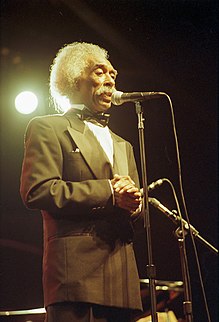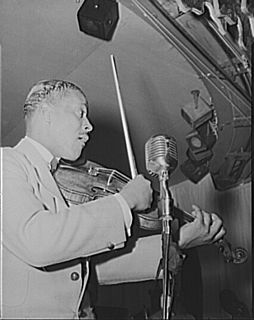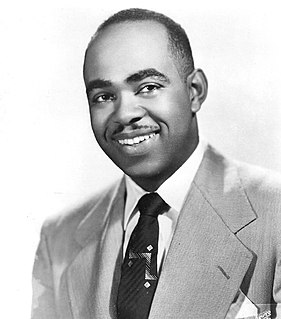Ernest Shepard, Jr. (July 19, 1916 in Beaumont, Texas – November 23, 1965 in Hamburg, West Germany) was an American jazz double-bassist and vocalist.

Beaumont is a city in and the county seat of Jefferson County, Texas, in the United States, within the Beaumont–Port Arthur Metropolitan Statistical Area. Located in Southeast Texas on the Neches River about 85 miles (137 km) east of Houston, Beaumont had a population of 117,267 at the time of the 2010 census, making it the thirtieth-most populous city in the state of Texas.

Hamburg is the second-largest city in Germany with a population of over 1.8 million.
Jazz is a music genre that originated in the African-American communities of New Orleans, United States, in the late 19th and early 20th centuries, and developed from roots in blues and ragtime. Jazz is seen by many as "America's classical music". Since the 1920s Jazz Age, jazz has become recognized as a major form of musical expression. It then emerged in the form of independent traditional and popular musical styles, all linked by the common bonds of African-American and European-American musical parentage with a performance orientation. Jazz is characterized by swing and blue notes, call and response vocals, polyrhythms and improvisation. Jazz has roots in West African cultural and musical expression, and in African-American music traditions including blues and ragtime, as well as European military band music. Intellectuals around the world have hailed jazz as "one of America's original art forms".
Shepard played in territory bands in Texas in the 1930s and soon after worked in California in the bands of Phil Moore and Gerald Wilson. For a short time he played in a quintet with Charlie Parker and Dizzy Gillespie in 1945; later that year he recorded as a vocalist with Lem Davis. He also worked with Eddie Heywood in 1945-1946. In the 1950s he worked with Slim Gaillard, Gene Ammons, Sonny Stitt, and Johnny Hodges, but played little in the latter half of the 1950s. In 1962 he became a member of Duke Ellington's band and accompanied him on tours of Europe through 1964; he also worked with Paul Gonsalves in 1963 and Johnny Hodges in 1964. He moved to Germany early in 1964 and took up work as a session musician for studio recordings, radio, and television. [1]
Territory bands were dance bands that crisscrossed specific regions of the United States from the 1920s through the 1960s. Beginning in the 1920s, the bands typically had 8 to 12 musicians. These bands typically played one-nighters, 6 or 7 nights a week at venues like VFW halls, Elks Lodges, Lions Clubs, hotel ballrooms, and the like. Francis Davis, jazz critic for The Village Voice, likened territory bands to "the Top 40 cover bands of their day, typically relying on stock arrangements of other ensembles' hits." He said, "many historians give much credit to territory bands for popularizing modern ballroom dancing that began during the World War I era with the influence of Vernon and Irene Castle."

Phil Moore was an American jazz pianist, arranger, and band leader

Gerald Stanley Wilson was an American jazz trumpeter, big band bandleader, composer/arranger, and educator. Born in Mississippi, he was based in Los Angeles from the early 1940s. In addition to being a band leader, Wilson wrote arrangements for Duke Ellington, Sarah Vaughan, Ray Charles, Julie London, Dizzy Gillespie, Ella Fitzgerald, Benny Carter, Lionel Hampton, Billie Holiday, Dinah Washington, and Nancy Wilson.










